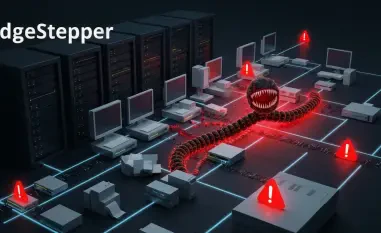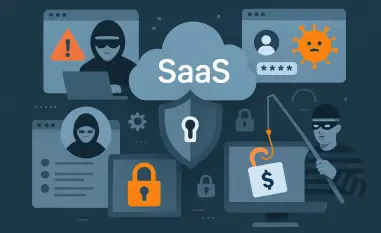I’m thrilled to sit down with Malik Haidar, a seasoned cybersecurity expert with a wealth of experience in tackling digital threats across multinational corporations. With a sharp focus on analytics, intelligence, and security, Malik has a unique knack for blending business insights with cutting-edge defense strategies. Today, we’re diving into the alarming rise of the Coyote malware, a banking trojan making waves with its novel exploitation of Windows features. Our conversation will explore what makes this threat so dangerous, how it manipulates legitimate tools for malicious purposes, and the specific risks it poses to users and financial institutions. Let’s get started.
How did you first come across the Coyote banking trojan, and what stood out to you as particularly concerning about this malware?
I first encountered Coyote while analyzing emerging threats targeting financial sectors, particularly in Brazil. What struck me immediately was its sophistication. Unlike many banking trojans that rely on basic keylogging or phishing overlays, Coyote has evolved to exploit a legitimate Windows accessibility feature called UI Automation. This isn’t just a gimmick—it’s a game-changer because it allows the malware to dig into user interfaces in ways that are incredibly hard to detect or block. It’s a stark reminder of how attackers are constantly finding new ways to weaponize tools meant for good.
Can you walk us through what the Windows UI Automation framework is and why it’s such a critical tool for legitimate applications?
Absolutely. Windows UI Automation, or UIA, is a framework built into the Microsoft .NET ecosystem, designed primarily for accessibility. Its core purpose is to help assistive technologies, like screen readers for visually impaired users, interact with the user interface elements of applications. Think of it as a bridge that lets these programs read and interpret things like buttons, text fields, or browser tabs programmatically. For legitimate use, it’s invaluable—without it, many users wouldn’t be able to navigate digital spaces. But that same power makes it a ripe target for abuse when it falls into the wrong hands.
What’s different about this latest variant of Coyote compared to its earlier versions, and how does it leverage UIA in a unique way?
The latest Coyote variant takes things to a new level. Earlier versions were already nasty, focusing on keylogging and screenshot captures, but this one has honed in on UIA to extract sensitive data directly from active windows. It starts by using the GetForegroundWindow() function to identify the active window on a user’s screen, then cross-references the window’s title with a list of targeted financial websites. If there’s no immediate match, it doesn’t stop—it uses UIA to drill down into sub-elements like browser tabs or address bars, hunting for a hit. This persistence and precision make it stand out. It’s like a burglar not just checking the front door but systematically searching every nook and cranny.
Who is in the crosshairs of this new Coyote variant, and what kind of data are they at risk of losing?
Right now, Coyote is primarily targeting users in Brazil, which aligns with its history of focusing on that region’s financial sector. It’s got a hard-coded list of 75 targets, including major banking institutions and cryptocurrency exchanges. That’s a slight uptick from earlier reports of 73, showing they’re expanding their scope. The data at risk is exactly what you’d fear—banking credentials, login details, and potentially even crypto wallet information. Once Coyote identifies a relevant window or tab, it can harvest whatever’s there, often without the user having a clue until it’s too late.
Why is UIA such an effective tool for Coyote to steal data, compared to other methods malware might use?
The effectiveness comes down to how UIA lets Coyote interact with applications at a granular level. Normally, if malware wants to parse the contents of another program—like reading what’s in a browser tab—it’s a complex, messy process. You’d need deep knowledge of that specific app’s structure to pull it off. UIA bypasses that hurdle by providing a standardized way to access and read UI elements. It’s like giving the malware a skeleton key to unlock data that would otherwise be out of reach. Plus, since it’s a legitimate framework, its activity often flies under the radar of traditional security tools.
How does Coyote’s strategy compare to other banking trojans you’ve seen, especially those on different platforms like Android?
There are definitely parallels, especially with Android banking trojans. Many of those exploit accessibility services on the Android OS in a similar way—using features meant to help users navigate apps to instead spy on their inputs or steal data. The concept isn’t new, but Coyote’s application of it to Windows via UIA feels more refined and harder to mitigate because desktop environments haven’t historically been as locked down for accessibility abuse as mobile ones. What’s unique here is the sheer persistence and the offline capability—Coyote can keep hunting for data even without a live connection, which isn’t as common in other platforms.
What challenges do cybersecurity professionals face in defending against a threat like Coyote that abuses a legitimate feature like UIA?
The biggest challenge is that UIA isn’t inherently malicious—it’s a critical tool for accessibility, so you can’t just block it without impacting legitimate users. That duality forces us into a tight spot. We have to develop detection mechanisms that can distinguish between normal UIA usage, like a screen reader, and abusive patterns, like rapid parsing of unrelated windows. It’s a cat-and-mouse game because attackers know security tools are hesitant to flag system-level features. On top of that, educating users about safe browsing habits and keeping systems updated is crucial, but it’s an uphill battle when the malware operates so stealthily.
Looking ahead, what’s your forecast for the evolution of threats like Coyote in the cybersecurity landscape?
I think we’re going to see more malware authors taking inspiration from Coyote, looking for other legitimate system features to exploit. As operating systems get more secure at the surface level, attackers will dig deeper into niche frameworks or APIs that aren’t as heavily monitored. Coyote’s success with UIA might spark a wave of similar tactics, not just in Windows but across macOS, Linux, and mobile platforms. My forecast is a bit grim—expect more hybrid threats that blend traditional malware techniques with system-level abuse. The industry needs to pivot fast, focusing on behavioral analysis and anomaly detection to catch these threats before they scale. We can’t afford to be reactive anymore.













